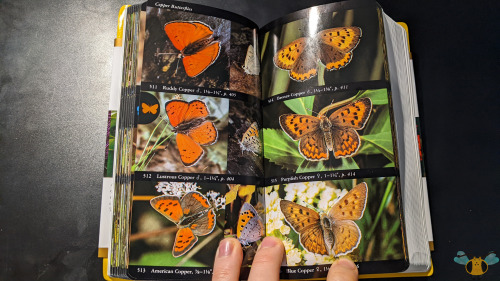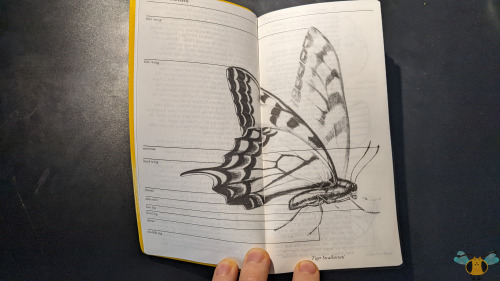#butterfly field guide
National Audubon Society Field Guide to North American Butterflies, by Robert Michael Pyle
It may be April Fool’s Day today, but I assure you this is no joke. I’m happy to announce that I’ll be using another field guide to help with insect identification. Previously I only had the Insect and Spiders Guide (also the Rocks & Minerals and Reptiles & Amphibians guides), but this book just arrived today. I’ll be looking through it in depth, but having just briefly looked through its contents, it’ll be a big help. For those not familiar with Audubon Society Field Guides, the books are structured to make identification relatively easy. The Butterflies are sorted into their family groups, each section accompanied by a silhouette of a typical specimen. In each section are wonderful photographs of Butterflies out in the field (some have 2 pictures since the top and bottom of the wing can feature different colors or patterns), their common name and a page number. The page number is used to locate the description of the insect in the back of the guide. For example: In Picture 6 the Desert Swallowtail says, p. 329. Scrolling to that page you can find pointers identification, range, behaviors and other facts. Since the guidebook it covers all of North America, there’s bound to be a few species I’ll never see (and even a few species not in the book), but it’ll be fun to learn about them nonetheless. I’m looking forward to using this book in between insect hunts to figure out the identities of some more peculiar Lepidopterans!
Since this is a Butterfly guide, there are no pictures of Moths, but there are descriptions of Caterpillars,Chrysalids and eggs. And since Skippers are Butterflies, you’ll find them here too. Me personally, I’d like to see an Audubon guide to North American Beetles given the sheer variety of Beetles out there. For more information, check the guidebooks directly at the NAS webpage.
Post link










